Mercedes-Benz E All-Terrain (2020 - 2023)
Informações do modelo
Dimensões
4947 mm
-
Audi Q7 5072 mm
-
Mercedes-Benz E-Klasse (This) 4947 mm
-
Mercedes-Benz V-Klasse 4895 mm
-
Mercedes-Benz G-Klasse 4825 mm
-
Volvo S60/V60 4778 mm
4,778.0
Avg
5,140.0
Higher is better
2939 mm
-
Mercedes-Benz V-Klasse 3200 mm
-
Audi Q7 2995 mm
-
Mercedes-Benz E-Klasse (This) 2939 mm
-
Mercedes-Benz G-Klasse 2890 mm
-
Volvo S60/V60 2872 mm
2,872.0
Avg
3,200.0
Higher is better
1861 mm
-
Audi Q7 1970 mm
-
Mercedes-Benz G-Klasse 1931 mm
-
Mercedes-Benz V-Klasse 1928 mm
-
Mercedes-Benz E-Klasse (This) 1861 mm
-
Volvo S60/V60 1850 mm
1,850.0
Avg
1,970.0
Higher is better
1497 mm
-
Mercedes-Benz G-Klasse 1973 mm
-
Mercedes-Benz V-Klasse 1907 mm
-
Audi Q7 1734 mm
-
Mercedes-Benz E-Klasse (This) 1497 mm
-
Volvo S60/V60 1432 mm
1,432.0
Avg
1,975.0
Higher is better
136 mm
-
Audi Q7 245 mm
-
Mercedes-Benz G-Klasse 241 mm
-
Mercedes-Benz E-Klasse (This) 136 mm
-
Volvo S60/V60 128 mm
128.0
Avg
245.0
Higher is better
11 m
Porta-malas/interior
640 l
-
Audi Q7 867 l
-
Mercedes-Benz E-Klasse (This) 640 l
-
Mercedes-Benz G-Klasse 640 l
-
Mercedes-Benz V-Klasse 610 l
-
Volvo S60/V60 495 l
495.0
Avg
867.0
Higher is better
1820 l
-
Mercedes-Benz V-Klasse 4200 l
-
Mercedes-Benz G-Klasse 2010 l
-
Audi Q7 1993 l
-
Mercedes-Benz E-Klasse (This) 1820 l
-
Volvo S60/V60 1407 l
1,407.0
Avg
4,630.0
Higher is better
Motores/transmissão
4 - 6
221 - 250 km/h
-
Volvo S60/V60 250 km/h
-
Audi Q7 226 km/h
-
Mercedes-Benz E-Klasse (This) 221 - 250 km/h
-
Mercedes-Benz G-Klasse 210 km/h
-
Mercedes-Benz V-Klasse 193 km/h
193.0
Avg
250.0
Higher is better
320 - 700 Nm
-
Mercedes-Benz G-Klasse 950 Nm
-
Audi Q7 500 Nm
-
Volvo S60/V60 400 Nm
-
Mercedes-Benz V-Klasse 380 Nm
-
Mercedes-Benz E-Klasse (This) 320 - 700 Nm
320.0
Avg
950.0
Higher is better
143 - 286 kW
-
Mercedes-Benz G-Klasse 285 kW
-
Volvo S60/V60 228 kW
-
Audi Q7 170 kW
-
Mercedes-Benz E-Klasse (This) 143 - 286 kW
-
Mercedes-Benz V-Klasse 120 kW
120.0
Avg
285.0
Higher is better
1950 - 2999 ccm
-
Mercedes-Benz G-Klasse 2989 ccm
-
Audi Q7 2967 ccm
-
Volvo S60/V60 1969 ccm
-
Mercedes-Benz E-Klasse (This) 1950 - 2999 ccm
-
Mercedes-Benz V-Klasse 1950 ccm
1,950.0
Avg
2,989.0
Higher is better
5 - 8 s
Consumo/ecologia
50 - 66 l
-
Mercedes-Benz G-Klasse 100 l
-
Audi Q7 75 l
-
Volvo S60/V60 60 l
-
-
Mercedes-Benz E-Klasse (This) 50 - 66 l
50.0
Avg
100.0
Higher is better
5 - 8 l/100km
-
Volvo S60/V60 8 l/100km
-
Mercedes-Benz G-Klasse 8 l/100km
-
Audi Q7 7 l/100km
-
Mercedes-Benz V-Klasse 7 l/100km
-
Mercedes-Benz E-Klasse (This) 5 - 8 l/100km
5.0
Avg
8.0
Higher is better
152 - 199 g/km
-
Mercedes-Benz G-Klasse 227 g/km
-
Audi Q7 204 g/km
-
Volvo S60/V60 190 g/km
-
Mercedes-Benz V-Klasse 185 g/km
-
Mercedes-Benz E-Klasse (This) 152 - 199 g/km
152.0
Avg
227.0
Higher is better
1915 - 2065 kg
-
Mercedes-Benz G-Klasse 2555 kg
-
Mercedes-Benz V-Klasse 2192 kg
-
Audi Q7 2055 kg
-
Mercedes-Benz E-Klasse (This) 1915 - 2065 kg
-
Volvo S60/V60 1903 kg
1,903.0
Avg
2,555.0
Higher is better
Reboque
84 kg
-
Mercedes-Benz G-Klasse 140 kg
-
Audi Q7 115 kg
-
Volvo S60/V60 100 kg
-
Mercedes-Benz V-Klasse 100 kg
-
Mercedes-Benz E-Klasse (This) 84 kg
84.0
Avg
140.0
Higher is better
100 kg
-
Mercedes-Benz G-Klasse 150 kg
-
Mercedes-Benz V-Klasse 150 kg
-
Mercedes-Benz E-Klasse (This) 100 kg
-
Audi Q7 100 kg
-
Volvo S60/V60 75 kg
50.0
Avg
150.0
Higher is better
2100 kg
-
Mercedes-Benz G-Klasse 3500 kg
-
Audi Q7 2800 kg
-
Mercedes-Benz E-Klasse (This) 2100 kg
-
Volvo S60/V60 2000 kg
-
Mercedes-Benz V-Klasse 2000 kg
2,000.0
Avg
3,500.0
Higher is better
750 kg
-
Mercedes-Benz E-Klasse (This) 750 kg
-
Volvo S60/V60 750 kg
-
Audi Q7 750 kg
-
Mercedes-Benz G-Klasse 750 kg
-
Mercedes-Benz V-Klasse 750 kg
750.0
Avg
750.0
Higher is better
Motores (E All-Terrain)
Filtrar por combustível:
Diesel
AUT Awd
E 220 d All-Terrain 4MATIC 9G-TRONIC
Engine & power
Potência
143 kW / 194 HP
Capacity
2.0L (1,950 ccm)
Cilindros
4
Performance
Aceleração de 0 a 100 km/h
8 s
Velocidade máxima
231 km/h
Torque & rpm
Torque
400 Nm
Consumption
Consumo combinado (WLTP)
6 l/100km
Emissions
Emissões de CO2 (WLTP)
163 g/km
Torque máximo a RPM
1600 RPM
Technical details
Potência máxima em RPM
3800 RPM
Injeção de combustível
Common Rail
Gasoline
AUT Awd
E 200 All-Terrain 4MATIC 9G-TRONIC
Engine & power
Potência
155 kW / 211 HP
Capacity
2.0L (1,991 ccm)
Cilindros
4
Performance
Aceleração de 0 a 100 km/h
8 s
Velocidade máxima
225 km/h
Torque & rpm
Torque
320 Nm
Consumption
Consumo combinado (WLTP)
8 l/100km
Emissions
Emissões de CO2 (WLTP)
190 g/km
Torque máximo a RPM
1650 RPM
Technical details
Potência máxima em RPM
5500 RPM
Injeção de combustível
Injeção Direta
Diesel
AUT Awd
E 220 d All-Terrain 4MATIC 9G-TRONIC
Engine & power
Potência
162 kW / 220 HP
Capacity
2.0L (1,993 ccm)
Cilindros
4
Performance
Aceleração de 0 a 100 km/h
8 s
Velocidade máxima
221 km/h
Torque & rpm
Torque
440 Nm
Consumption
Consumo combinado (WLTP)
5 l/100km
Emissions
Emissões de CO2 (WLTP)
152 g/km
Technical details
Injeção de combustível
Common Rail
Tipo de motor
Turbo
Diesel
AUT Awd
E 400 d All-Terrain 4MATIC 9G-TRONIC
Engine & power
Potência
243 kW / 330 HP
Capacity
2.9L (2,925 ccm)
Cilindros
6
Performance
Aceleração de 0 a 100 km/h
5 s
Velocidade máxima
250 km/h
Torque & rpm
Torque
700 Nm
Consumption
Consumo combinado (WLTP)
7 l/100km
Emissions
Emissões de CO2 (WLTP)
190 g/km
Torque máximo a RPM
1200 RPM
Technical details
Potência máxima em RPM
3400 RPM
Injeção de combustível
Common Rail
Gasoline
AUT Awd
E 450 All-Terrain 4MATIC 9G-TRONIC
Engine & power
Potência
286 kW / 389 HP
Capacity
3.0L (2,999 ccm)
Cilindros
6
Performance
Aceleração de 0 a 100 km/h
5 s
Velocidade máxima
250 km/h
Torque & rpm
Torque
500 Nm
Consumption
Consumo combinado (WLTP)
8 l/100km
Emissions
Emissões de CO2 (WLTP)
199 g/km
Torque máximo a RPM
1600 RPM
Technical details
Potência máxima em RPM
5500 RPM
Injeção de combustível
Injeção Direta
Gerações do Mercedes-Benz E All-Terrain
E-Klasse E-Klasse 124
1993 - 1997
Comprimento4740 mm
Altura1423 mm
Distância entre eixos2800 mm
Comprimento4740 mm
E-Klasse E-Klasse 210
1995 - 1999
Comprimento4795 mm
Altura1437 mm
Distância entre eixos2833 mm
Comprimento4795 mm (+55 mm)
E-Klasse E-Klasse 210 (1. Facelift)
1997 - 2002
Comprimento4818 mm
Altura1440 mm
Distância entre eixos2833 mm
Comprimento4818 mm (+23 mm)
E-Klasse E-Klasse 211
2002 - 2006
Comprimento4818 mm
Altura1452 mm
Distância entre eixos2854 mm
Comprimento4818 mm
E-Klasse E-Klasse 211 (1. Facelift)
2006 - 2009
Comprimento4856 mm
Altura1483 mm
Distância entre eixos2854 mm
Comprimento4856 mm (+38 mm)
E-Klasse E-Klasse 207/212
2009 - 2013
Comprimento4868 mm
Altura1471 mm
Distância entre eixos2874 mm
Comprimento4868 mm (+12 mm)
E-Klasse E-Klasse 207/212 (1. Facelift)
2013 - 2017
Comprimento4879 mm
Altura1474 mm
Distância entre eixos2874 mm
Comprimento4879 mm (+11 mm)
E-Klasse E-Klasse 213/238
2016 - 2020
Comprimento4933 mm
Altura1475 mm
Distância entre eixos2939 mm
Comprimento4933 mm (+54 mm)
E-Klasse E-Klasse 213/238 (1. Facelift)
2020 - 2023
Comprimento4935 mm
Altura1460 mm
Distância entre eixos2939 mm
Comprimento4935 mm (+2 mm)
E-Klasse E-Klasse 214
2023 - Agora
Comprimento4949 mm
Altura1468 mm
Distância entre eixos2961 mm
Comprimento4949 mm (+14 mm)
1926
1926
Mercedes-benz founded
1993
1993
E-Klasse 124 foi introduzido.
1995
1995
E-Klasse 210 foi introduzido.
1997
1997
E-Klasse 210 (1. Facelift) foi introduzido e substituiu E-Klasse 124.
1999
1999
E-Klasse 210 (1. Facelift) foi introduzido e substituiu E-Klasse 124.
2002
2002
E-Klasse 211 foi introduzido e substituiu E-Klasse 210 (1. Facelift).
2006
2006
E-Klasse 211 (1. Facelift) foi introduzido e substituiu E-Klasse 211.
2009
2009
E-Klasse 207/212 foi introduzido e substituiu E-Klasse 211 (1. Facelift).
2013
2013
E-Klasse 207/212 (1. Facelift) foi introduzido e substituiu E-Klasse 207/212.
2016
2016
E-Klasse 213/238 foi introduzido.
2017
2017
E-Klasse 213/238 foi introduzido.
2020
2020
E-Klasse 213/238 (1. Facelift) foi introduzido e substituiu E-Klasse 213/238.
2023
2023
E-Klasse 214 foi introduzido e substituiu E-Klasse 213/238 (1. Facelift).
Carros semelhantes
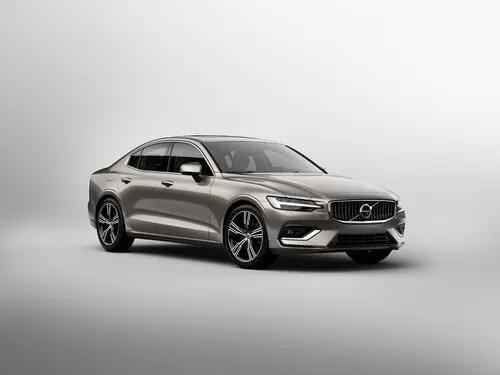
Body type
Perua
Comprimento
4778 mm
Largura
1850 mm
Altura
1432 mm
Distância entre eixos
2872 mm
Boot capacity
495 l
Peso
1903 kg
Portas
5
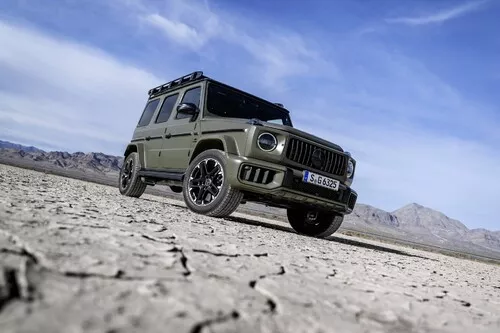
Body type
Veículo Todo-o-Terreno
Comprimento
4825 mm
Largura
1931 mm
Altura
1973 mm
Distância entre eixos
2890 mm
Boot capacity
640 l
Peso
2555 kg
Portas
5
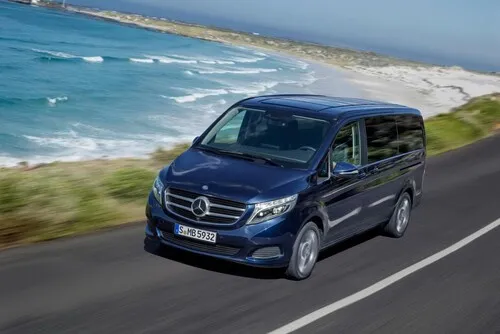
Body type
Ônibus
Comprimento
4895 mm
Largura
1928 mm
Altura
1907 mm
Distância entre eixos
3200 mm
Boot capacity
610 l
Peso
2192 kg
Portas
5
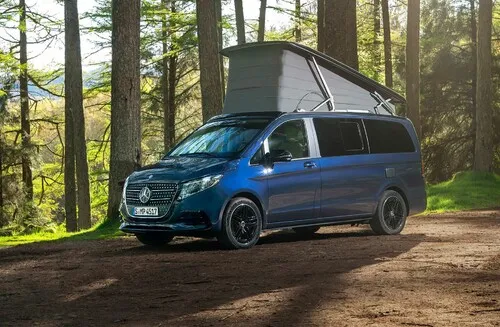
Body type
Motorhome
Comprimento
5140 mm
Largura
1928 mm
Altura
1975 mm
Distância entre eixos
3200 mm
Boot capacity
670 l
Peso
2531 kg
Portas
4
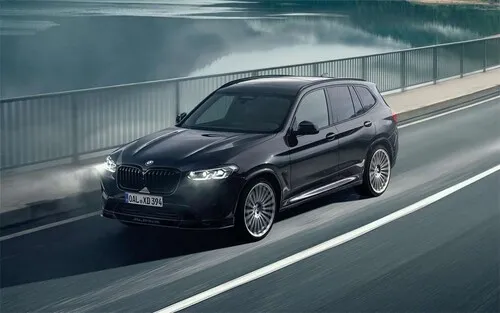
 2021
• G01
2021
• G01
Body type
SUV
Comprimento
4715 mm
Largura
1897 mm
Altura
1665 mm
Distância entre eixos
2864 mm
Boot capacity
550 l
Peso
2145 kg
Portas
5
Comparar com ...
Find the perfect match
Compare your car with other models
Comparing with:
Mercedes-Benz E{class} (2020)
